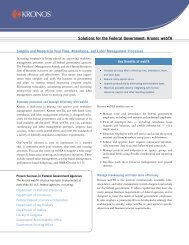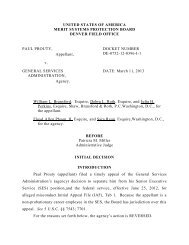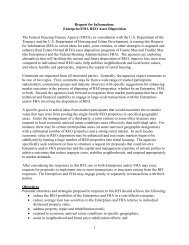Wastebook - Senator Tom Coburn - U.S. Senate
Wastebook - Senator Tom Coburn - U.S. Senate
Wastebook - Senator Tom Coburn - U.S. Senate
Create successful ePaper yourself
Turn your PDF publications into a flip-book with our unique Google optimized e-Paper software.
<strong>Wastebook</strong> 201316. Money-Losing Sugar Loans Leave Taxpayers With Bitter Taste – (USDA)$171.5 millionWhen Americans borrow money from banks, they are usually also required to pay them back withmoney. When U.S. sugar producers borrow money from the taxpayer, however, they can pay it backwith sugar.It’s all part of a convoluted, money-losing scheme to sweeten sugar producers’ bottom lines – knownas the U.S. Sugar Program.In 2013 alone, the government lost $171.5 million because sugar companies could not pay back thegovernment for money it borrowed. 224The 2008 Farm Bill created the Feedstock Flexibility Program (FFP) to increase the use of ethanol andbiofuels. Under this program, the government is required, in times of surplus, to buy sugar fromprocessors and to re-sell the sugar to ethanol plants. 225 Since the 2012-2013 sugar harvest season is thefirst to yield a surplus, taxpayers are witnessing the program’s wastefulness for the first time. InAugust, the first use of the FFP, the USDA bought only 7,118 tons out of 100,000 tons of sugar offeredfor resale. 226USDA then sold this sugar to an ethanol maker at a $2.7 million loss. 227In its second purchase, USDA paid $65.9 million for 136,026 tons of sugar, and then sold it to ethanolmakers for $12.6 million-a $53.3 million loss. 228 Facing a global surplus of sugar for the foreseeablefuture, the Congressional Budget Office forecasted the FFP to cost taxpayers at least $239 million overthe next ten years. 229So how does the USDA end up with this surplus sugar to sell at a loss to ethanol makers? Because theUSDA has lent over $1.2 billion to sugar processors in exchange for sugar in collateral. 230 In a move toprotect U.S. sugar processors from foreign competition, USDA disperses loans for price support toensure that U.S. domestic sugar prices are higher than the global markets and that Big Sugar keepsbringing in big profits. In the 2012-2013 season, 20,000 sugar farmers received $1.7 billion in netgains. 231Instead of repaying the USDA with cash from their profits, U.S. sugar processors and producers areactually defaulting on their loans and forfeiting the sugar they put up as collateral. American CrystalSugar, the leading American sugar processor with 15.1% of the market, defaulted on its loan of $71.2million, which is one-fifth of the government loans held by sugar processors who may also default. 232While defaulting on a loan has serious financial consequences for the American taxpayer, AmericanCrystal’s President and CEO, David Berg, called it “beneficial to [American Crystal’s] financial health,”and “the way the sugar program is intended to work.” 233American Crystal is not the only sugar processor not paying its bill to American taxpayers. Earlier inSeptember 2013, USDA accepted 85,000 tons of sugar as payment for a loan due in August. 234Although USDA swapped the sugar for import credits, the government had to swallow the $34.6million cost of the loan. 235 As of September 30, 2013, 20 percent of the USDA loans, over $233 million,to U.S. sugar processors were outstanding. 236 30














